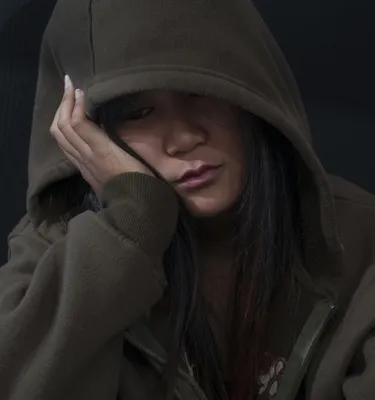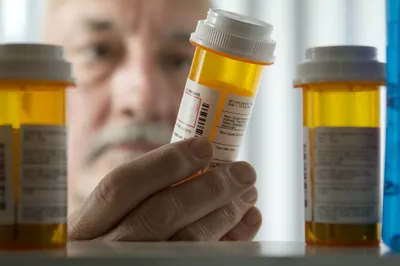Suicide is a major public health concern. It ranks 10th as the leading cause of death for all ages. In the United States alone, suicide accounts for one death every 12.3 minutes. It is estimated that more than 30,000 Americans committed suicide in any given year. The numbers are equally dismal for Canadians. Suicide is the 3rd leading cause of death for adolescents and young adults and the 2nd for 24 to 34 year-olds. For every suicide, at least 6 other individuals are intimately affected, whether family, friends or peers. More than 80 percent of people who attempt suicide suffer from depression or other mental illness.
The best way to prevent suicide is through early detection and treatment. Researchers have discovered that certain factors can greatly increase the risk of suicide and have coined the acronym “SADPERSONS” to describe them. Here is a list of those 9 suicide risk factors…
1. S: SEX
Males account for up to 80 percent of all suicides whereas females make more attempts and are more likely to have chronic thoughts of suicide. Males commit suicide 3.5 times more than females. Males are also use more lethal methods such as hanging and firearms; whereas females more often use overdosing on medications.
Some theorists propose that females have more social connections, family, and friends they can turn to for emotional support whereas men are socialized to be strong and keep their feelings bottled up inside. The stigma that they should just “suck it up”, act like a man, etc. Showing feelings or vulnerability is often perceived as weakness or non-masculine, making it difficult for men to seek appropriate help.
2. A: AGE
Those under the age of 19 and over 45 years old are the highest risk for committing suicide. Researchers estimate that more than 1 in 65,000 children in the 10 to 14 year-old age group commit suicide each year. Unfortunately for children under the age of 16, inpatient mental health beds are few and far between. Many have a waiting list, leaving it up to parents to monitor their children’s safety at home.
Seniors over the age of 65 are also at high risk. Their symptoms of depression may not be as clear cut as in their younger counterparts and are frequently masked by medical illness and under-diagnosed. If an elderly person has been feeling sad and been experiencing a lack of pleasure or interest in life for more than a month, a detailed depression assessment is warranted.
3. D: DEPRESSION
Depression is one of the most treatable mental health diseases with an excellent prognosis for 80 to 90 percent of those afflicted. However, left untreated, it becomes the number one illness associated with suicide. A person who is depressed does not produce an adequate supply of “feel good” neurochemicals in the brain, known as dopamine.
This leads to feelings of sadness, despair and to cognitive distortions. These distortions alter their perception of reality to one of despair and hopelessness. Suicide becomes a viable option to end their suffering and pain. The cognitive distortions narrows their thinking further by creating tunnel vision, until the only option they can see is that of suicide.
4. P: PREVIOUS ATTEMPTS
Previous attempts significantly increase the risk of suicide. This is because the person has already crossed the line from thinking about ending their life to making an attempt to do so. A previous attempt is though to be one of the strongest predictors of suicide.
It is estimated that more than 80 percent of those who die by suicide have a history of past attempts. Leaving a suicide note, text, or goodbye post on Facebook also ups the risk of the individual actually committing suicide. Regret over an unsuccessful attempt is a serious red flag. Statistics show there is 1 suicide death for every 25 attempts.
5. E: EXCESSIVE DRUG OR ALCOHOL USE
Alcohol and drugs themselves are depressants. A person with no mental health condition, but an alcohol or drug problem can become depressed and suicidal while intoxicated. Often times once they’ve sobered up they are no longer suicidal. Those who do suffer from depression or mental illness may also abuse drugs and alcohol in an attempt to self-medicate to numb their emotional pain.
Drug and alcohol abuse ranks 2nd as the most significant risk factor for suicide. Mental Illness ranks number 1. Alcohol and drug abuse can also contribute to social problems with employment, housing, and relationships. These added problems further increase the risk of suicide.
6. R: RATIONAL THINKING LOSS
Rational thinking loss or cognitive distortions is a common symptom of depression and in people who are under the influence of drugs or alcohol. Suicide risk is also increased in those suffering from psychosis, traumatic brain injury or other underlining organic brain syndromes. People who are depressed often engage in “awefulizing” stressful life events and imagining the negative consequences snowballing disproportionately.
They also refuse to allow themselves to feel any positive emotions an effect called dampening. For example, if they get a raise they immediately discount it by complaining that the tax man takes it all or that it won’t even begin to make a dent in their debts.
7. S: SOCIAL SUPPORTS LACKING
Lack of a strong social support system at home places a person at increased risk for suicide. According to researchers at John’s Hopkins Children’s Centre, college students who were both depressed and lacked social supports, had far greater incidents of suicidal thoughts and behavior.
Investigator Holly C.Wilcox found that lack of social supports (feeling unloved or uninvolved with peers or family) was the single most powerful predictor of suicidal thoughts, even when no other risk factors were present. In addition, if a member of a person’s immediate family such as a parent or sibling commit suicide then that fact alone increases their risk for following suit.
8. O: ORGANIZED PLAN
A well thought out, organized, and detailed plan involving a lethal method is a significant red flag. If they have access to the materials or weapons needed to carry out their plan, it should be taken even more seriously. Over 50 percent of all suicides involved the use of a firearm.
If a person says they are going to shoot themselves but have no access to guns they are at lower risk than a distressed hunter who has a gun collection in his basement. A realistic, achievable written plan accompanied by a suicide note should be never be ignored.
9. N: NO SPOUSE
People who are separated, widowed or divorced are at higher risk of committing suicide. Marriage seems to be a protective factor, especially in males. Anniversaries, birthdays, and holidays may be an especially high risk time for people who are alone without a spouse.
When one spouse dies, the surviving spouse has a 66 percent increased chance of dying themselves. Scientists now believe some people can actually die of a broken heart. This effect is strongest in the first three months after a partner’s death. Maladaptive grieving is also thought to be linked to suicide risk.
10. S: SICKNESS
Chronic or terminal illness and pain are associated with an increased risk of suicide. People who experience a cardiac arrest are sometimes at greater risk for depression. Some researchers feel this may be related to a lack of oxygen to the brain at the time of the cardiac incident and the resultant brain damage may lead to the development of depression.
Chronic illness is often characterized by chronic pain and fatigue and limited ability to enjoy and partake of previous activities. Mobility and independence may also be negatively impacted by illness. As may be social relationships. All of these factors can contribute to increased feelings of hopelessness and depression.













